How Islam-Girey prevented Khmelnitsky from destroying the Polish army near Zhvanets
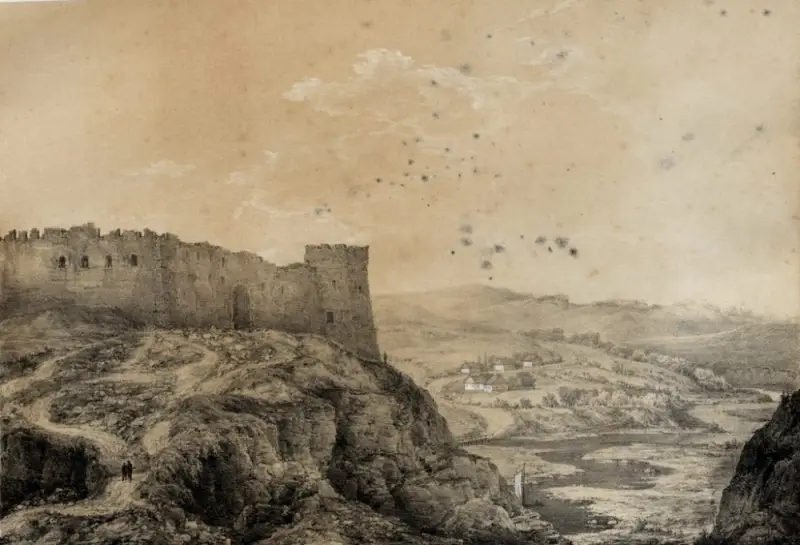
prehistory
On June 1–2, 1652, in the battle of Batog, Khmelnytsky destroyed a 20-strong Polish army led by Martin Kalinowski (How a “romantic affair” turned into the complete destruction of the Polish army near Batog), which covered Moldova. The Moldavian ruler Lupul had no choice but to accept the “matchmakers” and marry his daughter to Timofey Khmelnitsky.
In Little Russia, the victory at Batog inspired the people. War has not yet been officially declared after the conclusion of the Peace of Belotserkov. Therefore, the Polish king Jan Casimir asked how the Cossacks dared to carry out a massacre near Batog. Hops responded ironically that it was “a prank typical of cheerful people.” That the son and his friends were going to a wedding, and on the way they quarreled with another young group.
For Poland, the defeat at Batog became a sobering shower. The lords and gentry took it as a challenge. The quarrels stopped, an extraordinary Sejm quickly assembled, which allocated the treasury to the king and convened the Pospolita Rushenie (gentry militia). Poland was supported by the papal throne, Venice and Austria, they sent money. Mercenaries were recruited in Germany.
A delegation was again sent to Khmelnitsky to divert attention; they promised royal mercy and forgiveness if the Cossacks obeyed and surrendered. weapon, and the peasants will return to their lords. Hops could not stand such impudence:
So this is what you came for? Why do you really appear to be simpletons? Why are you making jokes with me...
The king is preparing to go to war against me, as he pleases! I wish him to be a leader: I am ready to meet him where and when he wants.”
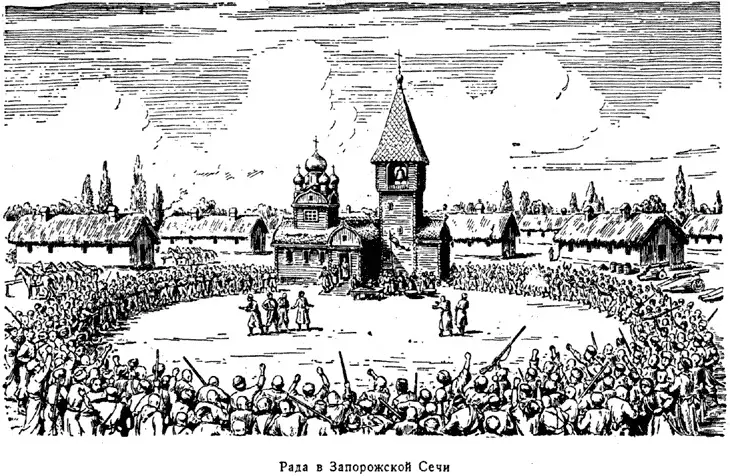
Battle of the Monastery
In March 1653, the 15-strong corps of Stefan Charnetsky invaded the Bratslav region. Czarnecki was among the numerous Polish nobles who were captured by the Cossacks after the Battle of Zheltye Vody. Pan was sent in chains to the Crimea, from where he was ransomed for a lot of money in 1649.
After this, he again took an active part in the battles against the Cossacks, including the Berestetsky Battle, which was victorious for the Poles (The defeat of Khmelnitsky in the Battle of Berestetsky) and in the defeat at Batog. In the final battle, he narrowly escaped death by hiding in a haystack. Czarnecki was a supporter of the war “party” and was of the opinion that no compromises with the enemies of Poland were possible.
The Poles captured Korostyshev, Samgorodok, and Priluki. The population was slaughtered indiscriminately: rebels or civilians, adults, women, old people and children. The Polish lords believed that it was necessary to cut out all Russians completely. This was the official position of Warsaw. A Sejm was assembled in Brest, which adopted a resolution on the genocide of Russians. The Cossacks posed a threat of eternal rebellion to the Polish-Lithuanian Commonwealth, so they must be completely destroyed. They promised to distribute land to the small nobility in Little Russia.
Russian diplomats reported to Moscow:
Meanwhile, Ivan Bohun and his regiment were able to stop the further advance of Charnetsky’s army. Bohun took up defensive positions in Monastyrische and repelled attacks from superior enemy forces. Then the colonel resorted to a military trick: he dressed some of the Cossacks in Tatar dress and attacked the enemy. He himself made a foray out of the city. The Poles, thinking that the Tatar horde had come to the aid of the Cossacks, panicked, abandoned the convoy and fled.
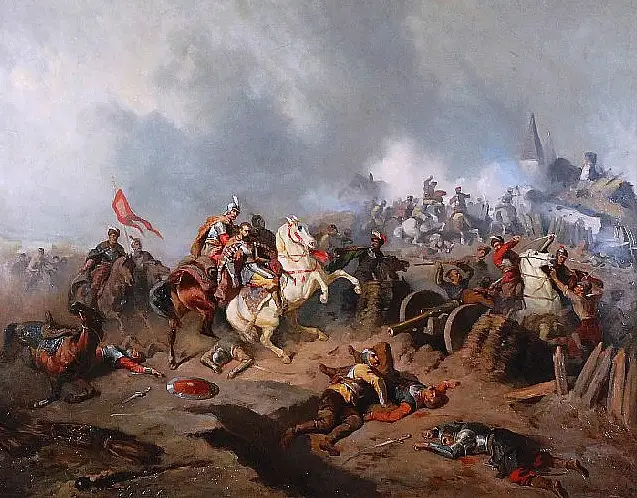
Stefan Czarnecki near the Monastery. Hood. Henrik Pillati
Russia is preparing for war
Moscow at this time was still trying to bring Warsaw to reason. But the lords regarded the caution of the tsarist government as weakness. They say that the Russians are only intimidating, but are not going to fight.
However, Moscow had already decided on war. Mobilization began. In March 1653, letters were sent to the districts for serving people to report to the court “with full service” by May 20. The governors were instructed to enumerate the “old soldiers” by city. In addition to the 15 already existing, 6 more soldier and reiter regiments began to be formed. The first hussar regiment is formed. Recruitment for new regiments has begun. The collection of “dacha” people began - 1 person from 100 peasant households from monastic, church lands, from estates that were left to feed the old nobles, widows and children of deceased (perished) service people.
Intensified work began on the production of gunpowder. General Leslie was supposed to conduct an audit of ammunition depots. It was reported that the army received more than 31 thousand muskets, 5 thousand carbines, 4 thousand pairs of pistols. There were 10 thousand muskets and 13 thousand barrels left in reserve. Cannons, 32 thousand muskets, bladed weapons and armor, and ammunition were purchased from Sweden and Germany. Military specialists were also recruited in Western Europe.
Moscow tried for the last time to settle matters with the world. The Repnin-Obolensky embassy was sent to Warsaw. It repeated previous claims about errors in the Tsar's title, about “dishonorable” books, about insults to the Russian sovereign. Repnin presented an ultimatum: Warsaw had to correct the mistakes and return to the conditions of the Zboriv Peace Treaty, return the property of the Orthodox Church in Little Russia, and no longer oppress the Orthodox.
The Polish gentlemen did not even condemn these conditions. Repnin learned that opposing decisions had already been made on the eradication of Russians and the Orthodox faith in the Ukrainian outskirts of the Polish-Lithuanian Commonwealth. Then Repnin interrupted the negotiations and announced that “the great sovereign will stand up for his honor, as much help as the merciful God gives him.”
Warsaw did not take this demarche seriously. They say the Russians are bluffing and are afraid of Poland. And if they try, they will be crushed.
Suceava campaign
The Polish lords found Khmelnitsky's weak point. His alliance with Moldavia. The Moldavian ruler was a weak help for the Hetmanate. His subjects already strengthened the Cossack army. The position of the ruler Vasily Lupul (Lupu) was weak. The local boyars did not want to support the “khlops”. The owner of Iasi was at enmity with other Danube rulers - the governor of Wallachia Bessarab and the prince of Transylvania Rakoczi.
The Poles contacted them, supported the local boyars and organized a conspiracy. The leading boyar Georgy Stefan became the head of the conspirators. Transylvanian troops entered Moldova, and they were joined by the forces of the conspirators. Vasily Lupu was forced to flee to Khmelnitsky in Chigirin. His supporters continued to hold the prince's residence - the Suceava fortress. The boyars sent ambassadors to Constantinople with a request that “... the Sultan not give the throne to Vasily Lupu, but approve of Stefan, for whom the country stands.”
Khmelnitsky, instead of leading the army to the west, was forced to help out a relative. His son Timosh-Timofey and Lupul led an army of 20 thousand. Khmel himself followed them with the main forces. An army was not needed; Timofey crossed the Prut and without much effort defeated the Wallachian-Transylvanian army. Having entered the capital of Moldova, Iasi, Timosh returned the royal throne to his father-in-law.
Khmel himself stood at the border and returned to Chigirin. Here the ambassadors of the Russian Tsar Matveev and Fomin were waiting for him. They reported that his requests to transfer to Russian citizenship were satisfied. Soon, steward Lodyzhensky brought a letter of acceptance of the Hetmanate under the high hand of Tsar Alexei Mikhailovich. He said that an army was being assembled in Russia.
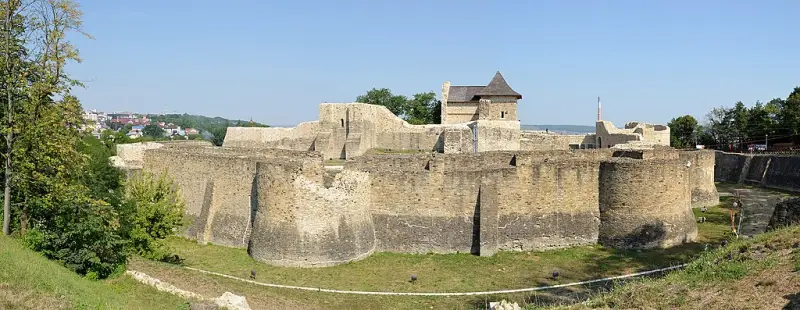
Castle in Suceava
On the Danube, the situation worsened sharply. The Moldavian ruler decided to build on his success, and Cossack-Moldavian troops invaded Wallachia. After several successful battles, the allied army suffered a heavy defeat near the village of Finta near Bucharest from the combined forces of Wallachia and Transylvania under the command of Bessarab and Stefan. Timofey and Vasily Lupu had no reserves, and the enemy launched a counter-offensive. In addition, several Polish detachments joined George Stefan.
The remaining forces of Khmelnytsky (about 7 thousand soldiers) settled in the Suceava fortress. On August 21, the army of George Stefan, which soon increased to 30 thousand, approached Suceava and tried to storm the Cossack camp under the walls of the fortress. This attempt failed, as the Cossacks managed to build strong fortifications. The siege of the fortress began. The Tatars (2 thousand), who came with the Cossacks, separated and returned home.
After the siege began, Timos sent a letter to his father Bogdan, asking for help. The hops were torn - where to go? To meet the royal Polish army or to save his son? How to sacrifice an heir, a father's pride? Most of the army covered the Hetmanate near Bila Tserkva. Khmel tried to gather a second army.
The hetman sent station wagons to the elders three times with orders to gather to help the besieged in Suceava, but they were in no hurry. Khmel also asked the Crimean Khan for help. Islam-Girey initially refused. But then, under pressure from the princes and the Murzas, who dreamed of capturing the treasures of Lupul, he sent troops in September. One Tatar detachment headed to Moldova.
But it was already too late. Heavy fighting took place near Suceava. The Cossacks tried to break through because they were running out of food and gunpowder, and there was a shortage of water. After the first success they were thrown back. On September 11, the enemy launched a general assault. Dengoff's Polish dragoons managed to break into the Cossack ramparts, but were knocked out by the defenders. The Cossacks did not use firearms; apparently, they were running out of gunpowder.
The attackers suffered very heavy losses: 1 Moldovans, Vlachs and Transylvanians, 500 Poles. Eyewitnesses wrote that Polish corpses filled the rampart in front of the Cossack trenches. The Polish dragoons had only one captain alive, and all the other officers were killed. Quarrels began between the Poles and their allies over who was to blame for this failure.
At night, the Cossacks made a new sortie, but they were driven back. On September 12 (22), 1653, during a cannon attack on Cossack positions, Timofey Khmelnitsky was wounded in the thigh. Gangrene began, from which the brave commander died on September 15 (25), 1653.
The Cossacks elected Colonel Nikolai (Mikhail) Fedorovich as punishable hetman and continued to bravely defend themselves. Their opponents no longer wanted to face death. Rumors reached Stefan's camp that Crimean troops were coming to help Vasily Lupu. Desertion increased: several Polish banners fled from the camp. Therefore, we decided to start negotiations. The Cossacks were offered honorable surrender.
An agreement was signed on October 9. The Cossacks were left with weapons, except guns, banners and the body of Timosh. They left all the stolen goods. Vasil Lupu's family was allowed to leave freely. Lupu moved to Crimea, from there to Turkey, where he died in custody. George Stefan became the Moldavian ruler. According to various sources, 4–5 thousand Cossacks left the fortress.
Bogdan already on the road met the coffin with the body of his son. He said one thing: Timosh died, as a real Cossack should die. Hops survived this personal tragedy. On the contrary, he pulled himself together again, was energetic and decisive.
The new ruler of Moldavia, George Stefan, the ruler of Wallachia, Bessarab, and the prince of Transylvania, Rakoczi, negotiated with Warsaw about joint actions against Khmelnitsky. However, the two-month difficult struggle for Suceava showed the rulers of Moldavia, Wallachia and Transylvania the full complexity of the war with the Cossacks. Therefore, things did not go further than negotiations. Moreover, soon the Moldavian ruler, through Khmelnitsky, began secret negotiations with Moscow about the transition to Russian citizenship.
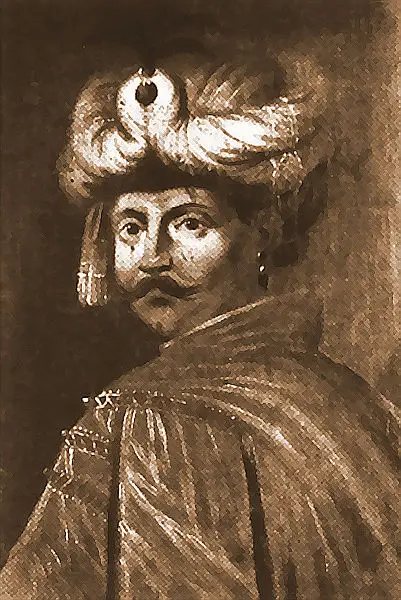
Timofey Khmelnitsky
Battle of Zhvanets
The diversion of Khmelnitsky to Moldova allowed the Polish king John Casimir to concentrate a 60-strong army at Kamenets. But the gentry, as usual, gathered slowly. The king stood in place for several months, wasting time and the opportunity to strike, while Khmel rushed to help his son. The king planned to crush the Hetmanate with blows from several directions. He entered into alliances with Wallachia, Transylvania, and the Moldavian rebel G. Stefan.
The Lithuanian hetman Radziwill was supposed to attack Kyiv from the north, along the Dnieper. But this plan failed. Radziwill reported that the Russians were gathering regiments near the Lithuanian border. The Lithuanian gentry refused to go south, fearing that their estates would be ruined. They didn’t believe Radziwill. The king sent new orders to attack. The Pope even threatened with a curse. But the Lithuanian hetman and the local lords did not give up; they did not want to leave their possessions defenseless.
Bogdan Khmelnytsky and the Crimean Khan, having combined their forces and gathering up to 60–80 thousand soldiers, began an offensive in the direction of Kamenets-Podolsky. The Polish king was awaiting news of the fall of Suceava, after which the troops of the Wallachian, Moldavian and Transylvanian governors were supposed to march towards him. However, the Poles never received help. Only Polish detachments arrived, sent to help in Moldova.
From Kamenets, Polish troops moved to Bar. Having received news of the connection of the Crimean Khan's troops with the Cossacks, the Polish military council decided to retreat to the Zhvanets area, become a fortified camp there and wait for the allies to approach. Near the Zhvanetsky castle, between the Dniester and Zhvanchik rivers, the Polish army built a fortified camp. A bridge was built across the Dniester to connect with Bukovina.
Taking into account the difficult situation of the Polish army, Khmelnitsky decided to limit himself to the siege of the enemy camp. In October, Cossacks and Tatars blocked the Polish army near Zhvanets. Khmelnitsky's troops occupied the surrounding Podolsk towns. Individual Polish detachments that tried to help the main forces and collect provisions were defeated. Cossack detachments carried out raids across Galicia and Volyn.
The Polish troops lacked food, fodder, firewood, and warm clothing; the situation was aggravated by the cold. Mass desertion of the gentry and internal unrest undermined the combat effectiveness of the army. The siege lasted 2 months. It’s the same as during the Battle of Zborov (The defeat of the Polish army near Zborovo), was heading towards the complete defeat of the Polish army. Food and ammunition ran out in the royal camp, and epidemics broke out.
Betrayal of the Crimean Horde
News arrived that Russia was entering the war. On October 1 (11), 1653, the Tsar's Zemsky Sobor decided to satisfy Khmelnitsky's request and declared war on the Polish-Lithuanian Commonwealth. The only hope for salvation for the Polish high command was negotiations with the Crimean Tatars.
The situation for the Poles was again saved by the Crimean Khan. Khmelnitsky, who calculated everything correctly and saw that the Polish troops were demoralized and the moment of decisive action had arrived, suggested that the khan deliver a decisive blow. However, the Crimean Tatars abandoned their allies in December and left. Islam-Girey, in light of the hopeless situation of the Polish army, decided to prevent its complete defeat.
Crimean predators gladly participated in this war; plundering settlements and taking people for sale into slavery greatly enriched them. In addition, the Crimean troops tried to avoid serious clashes. They waited to see who would take it. If the Cossacks won, they joined.
The Crimean Khan did not want a decisive victory for the Cossacks or the entry of the Hetmanate into the Russian Empire, since this complicated the situation in Crimea. The best scenario for the Crimean feudal lords is long-term massacres and civil strife, when people can be taken away with impunity to be sold into slavery and plunder lands.
The Polish king promised to pay the Crimean Khan an indemnity of 100 thousand zlotys and gave permission to rob and drive into slavery (yasyr) the Russian population in Volyn for 40 days.
After the departure of the Crimean army, Khmelnytsky had to agree to restore the terms of the Zboriv agreement of 1649. The Belotserkov Treaty of 1651, which was unfavorable for the Cossacks, was cancelled. It was obvious to everyone that this was again a temporary agreement, pending a new aggravation.
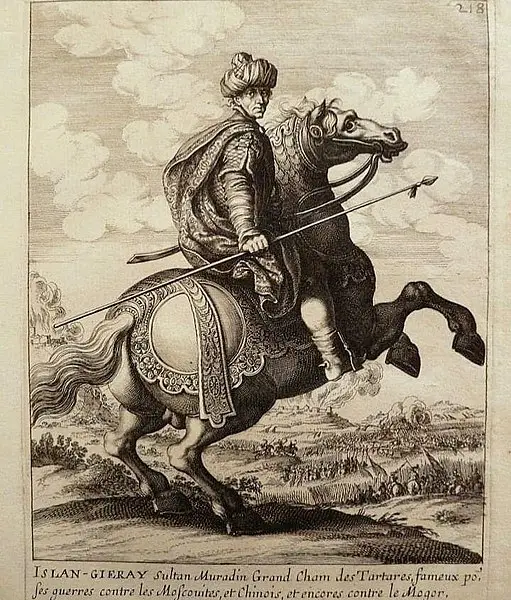
Khan of Crimea Islam III Giray (ruled 1644–1654)
Information